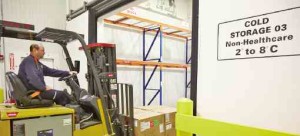The Department of Energy has taken initial steps to consider the possibility of building a small modular nuclear reactor (SMR) in Sulu, which the local government is keen on hosting.
Energy Undersecretary Donato D. Marcos told reporters that Sulu had been “aggressive in proposing” a nuclear facility in the mini archipelago, in line with efforts to ensure “a stable, secure, predictable and reasonably priced electricity supply” for the province.
Based on international standards, an SMR has a power-generating capacity of 300 megawatts or less, but Marcos said the proposal in Sulu involved less than 100 MW.
“Our visitors from the International Atomic Energy Agency (IAEA) just left last Thursday,” Marcos said. “We are [making efforts to enable] our technical working group to realize the infrastructure requirements [for such a facility]. This is still a long process ahead, and there will be more scientific visits expected [from abroad].”
Marcos said the potential SMR projects were part of a nuclear energy program that the DOE was crafting, which would cover the entire country and not just the mothballed Bataan Nuclear Power Plant.
Energy Secretary Alfonso Cusi said the process was expected to be “long” because the government wanted to avoid another BNPP—which was built and paid for at $2.3 billion but never generated electricity.
“We have to go through every step of due process, which was not done with regard to the BNPP,” Cusi said. “If we have a province that would be willing, the process would be faster.”
In an international forum held in Manila last September, the IAEA pushed nuclear energy as a means for countries to reduce greenhouse gas emissions through innovations such as small reactors that could serve well in archipelagos like the Philippines.
IAEA director general Yukiya Amano said the United Nations body continued to help “newcomers” in establishing the necessary infrastructure for nuclear power.
“We will focus more on safety aspects of issues such as extending the operating life of nuclear power plants, decommissioning, the disposal of high level radioactive waste, innovative technologies such as fast reactors and small and medium sized reactors, and the safety of radiation sources used in nonpower applications,” Amano said.


